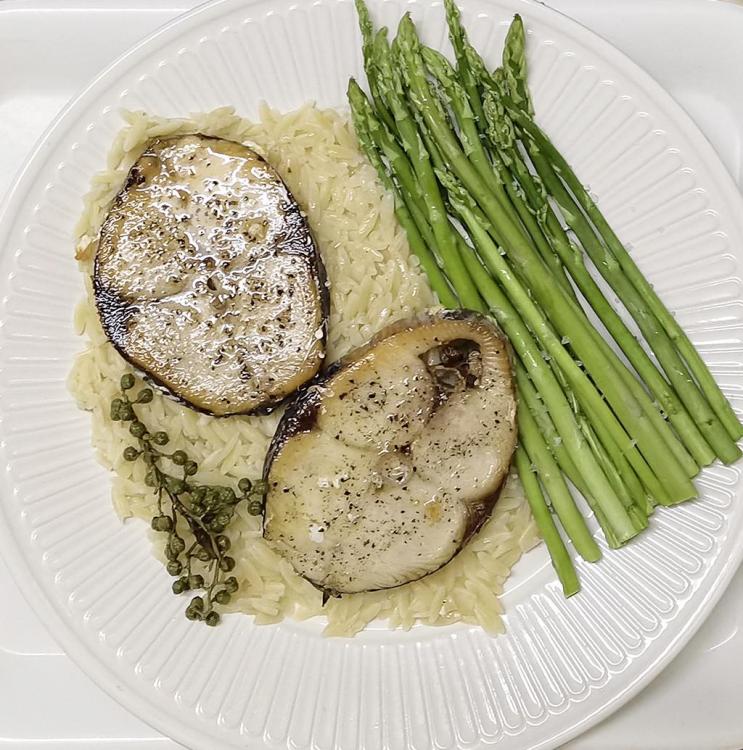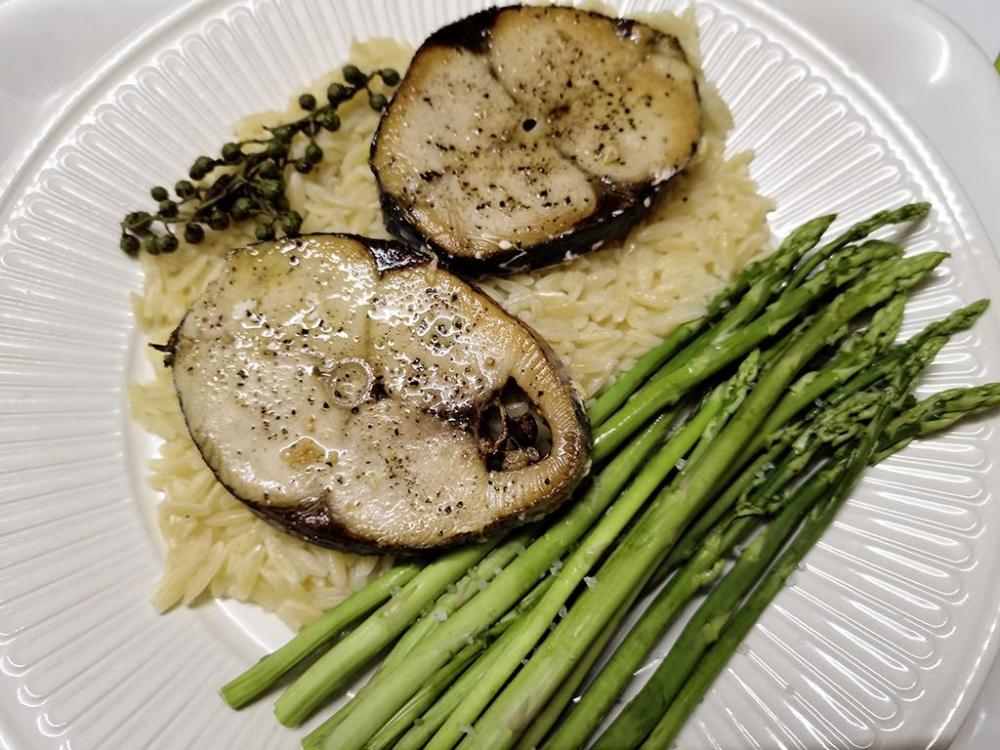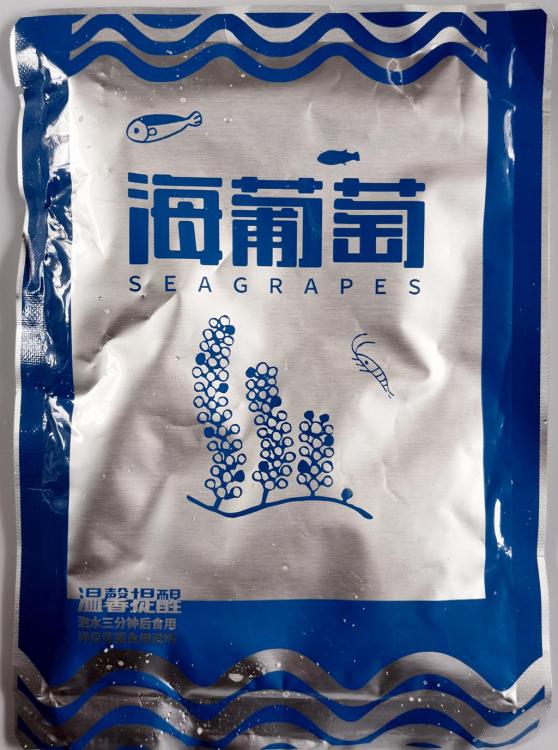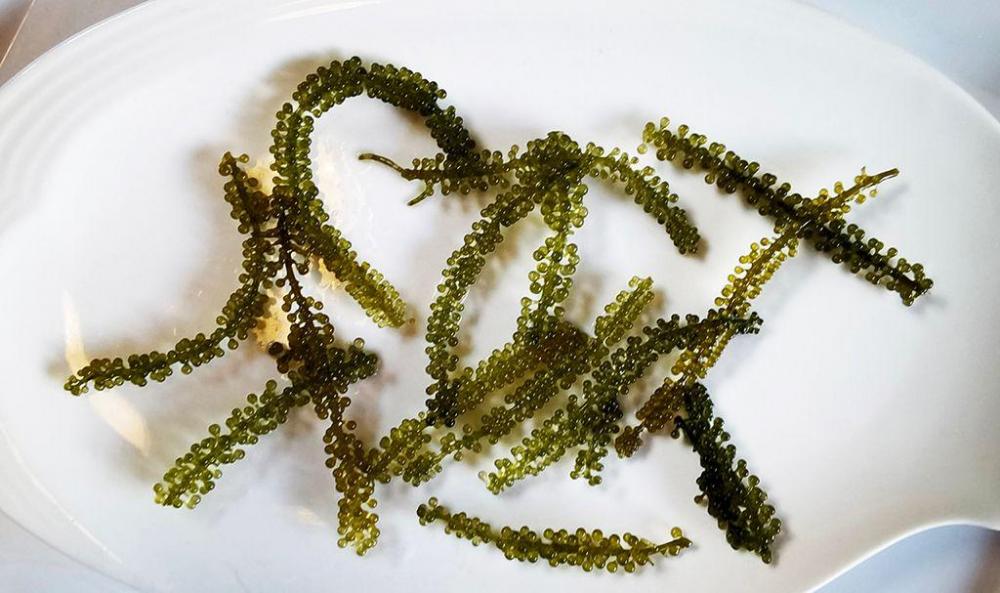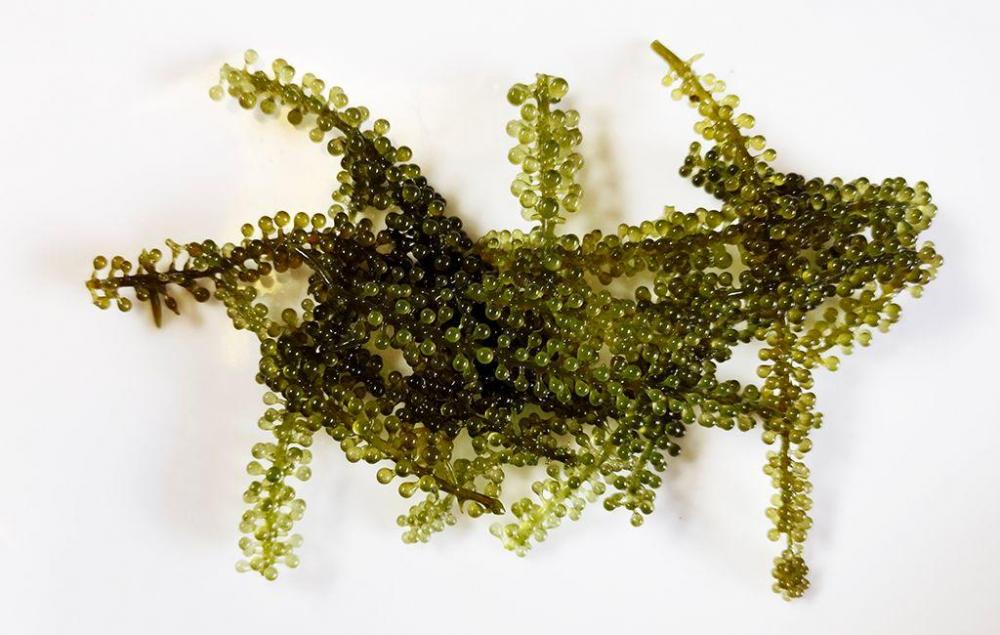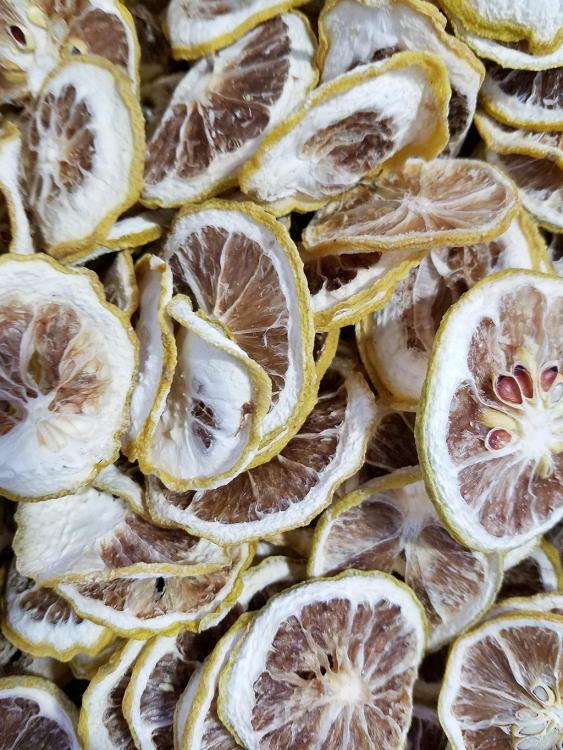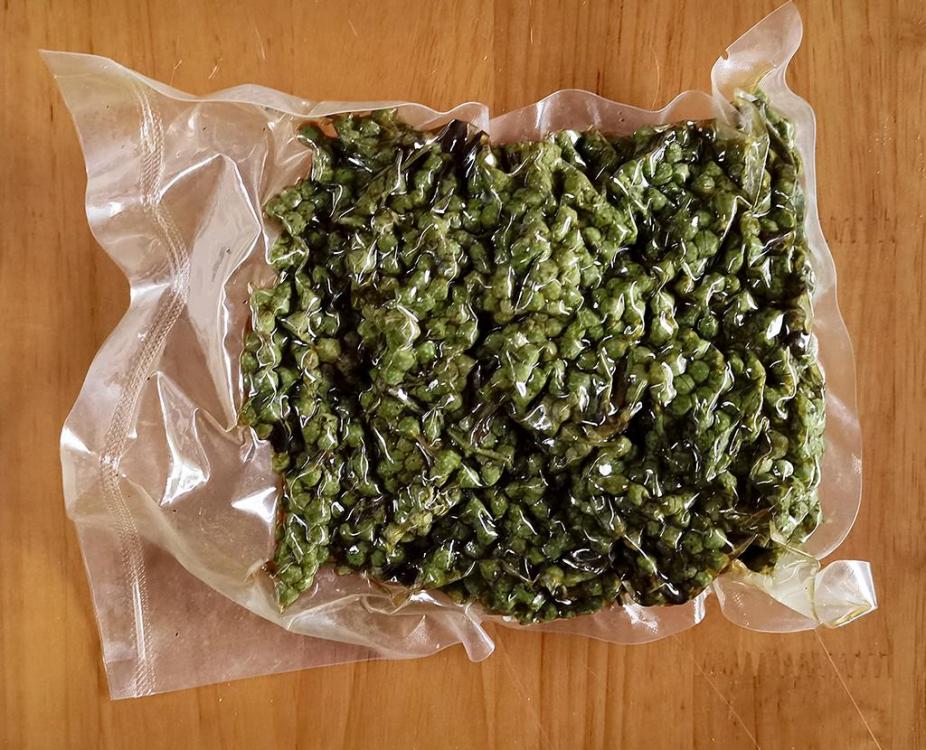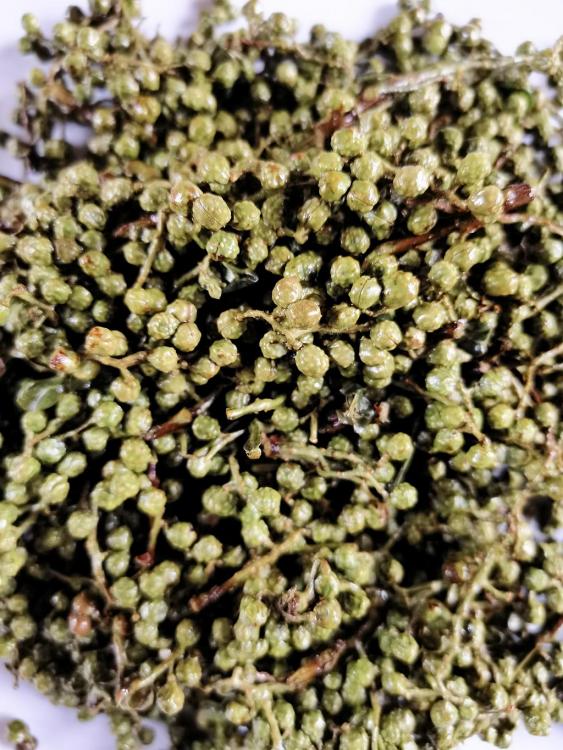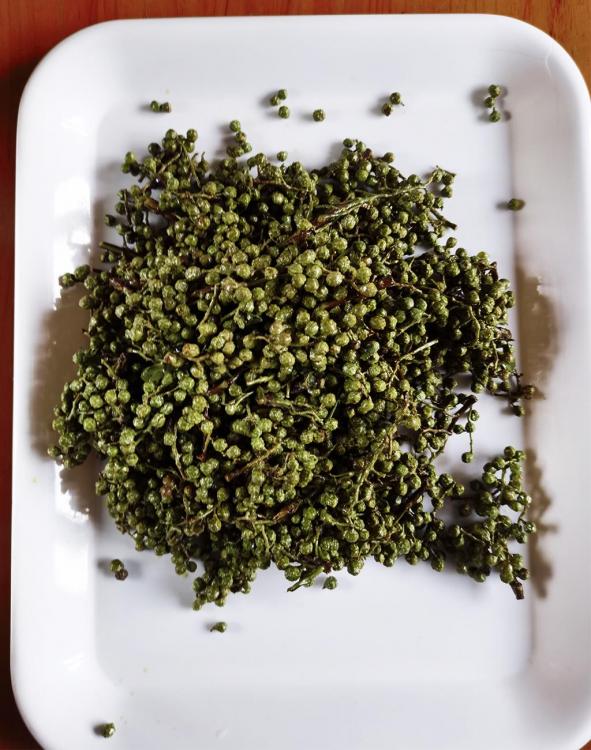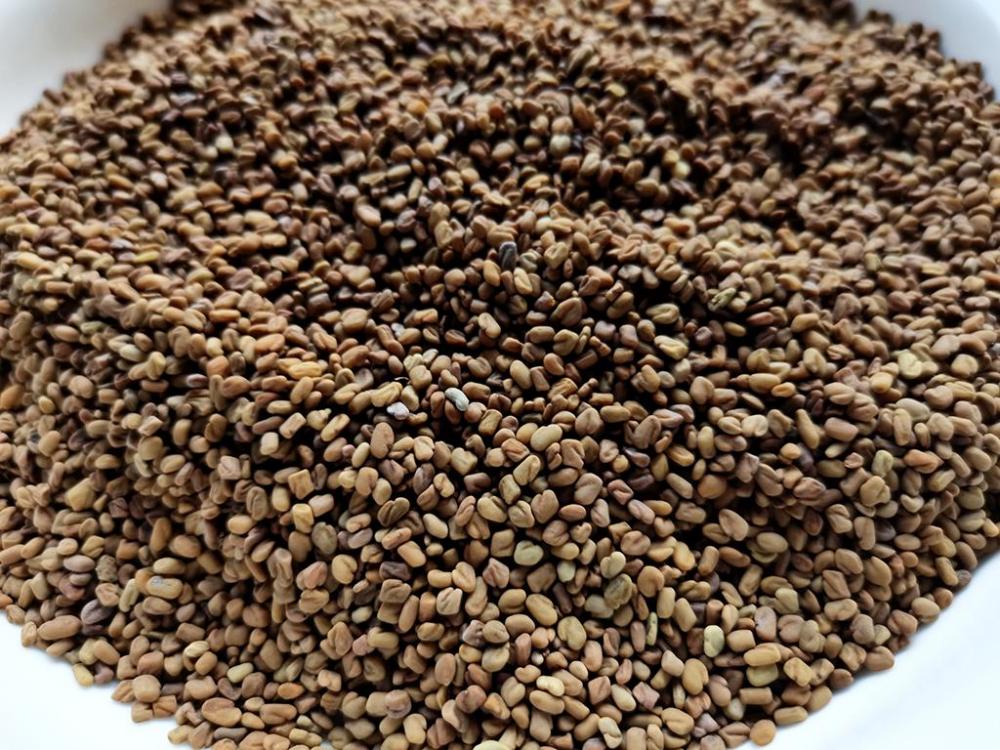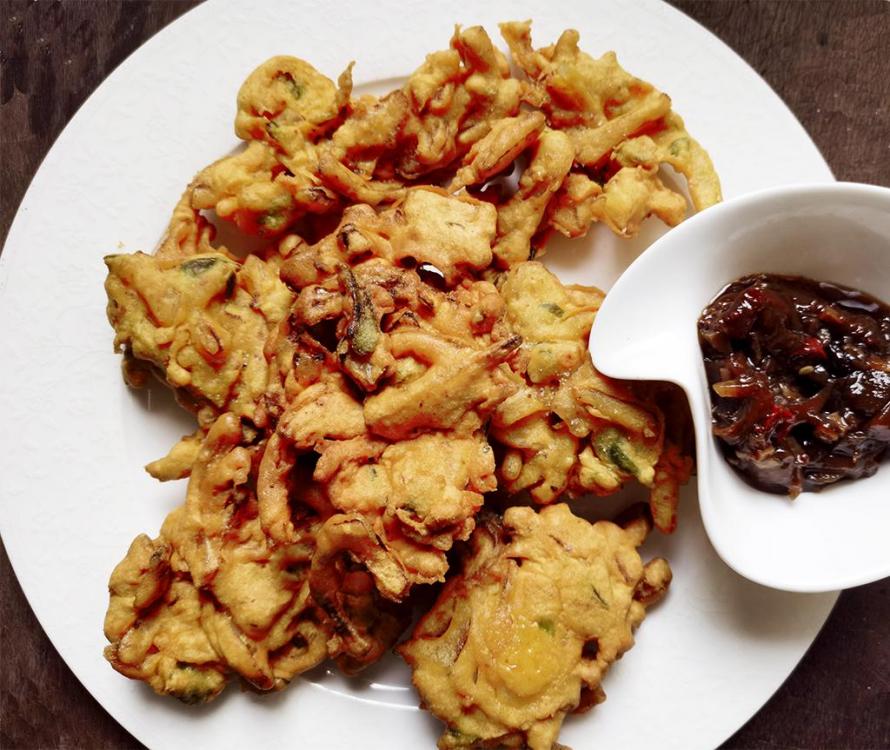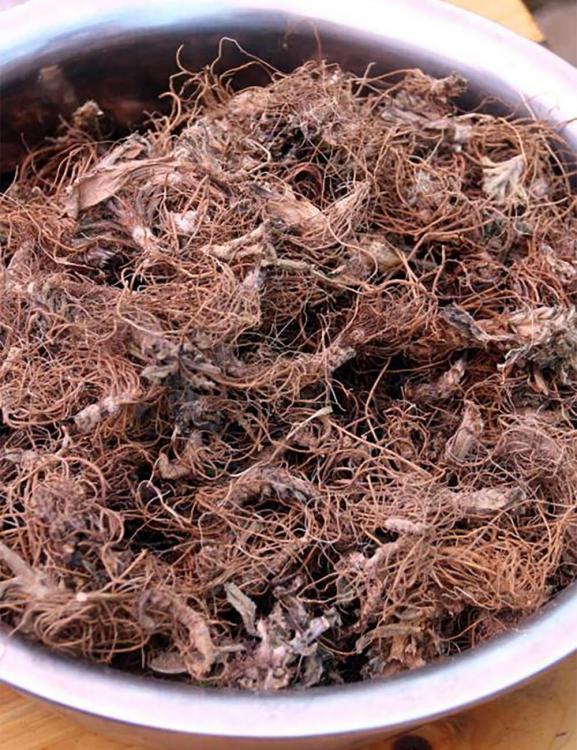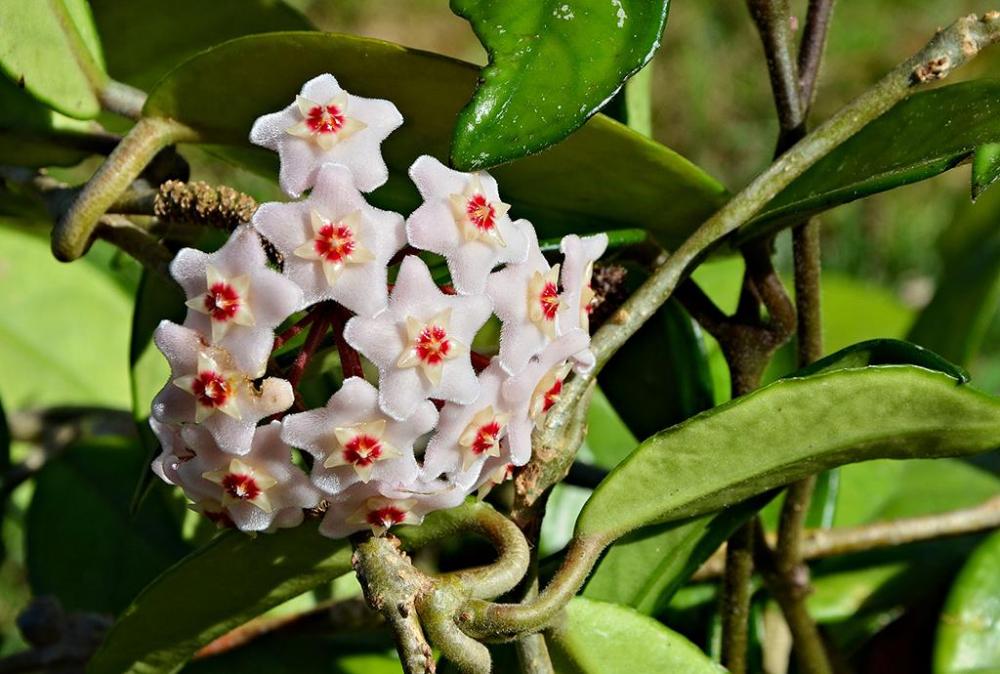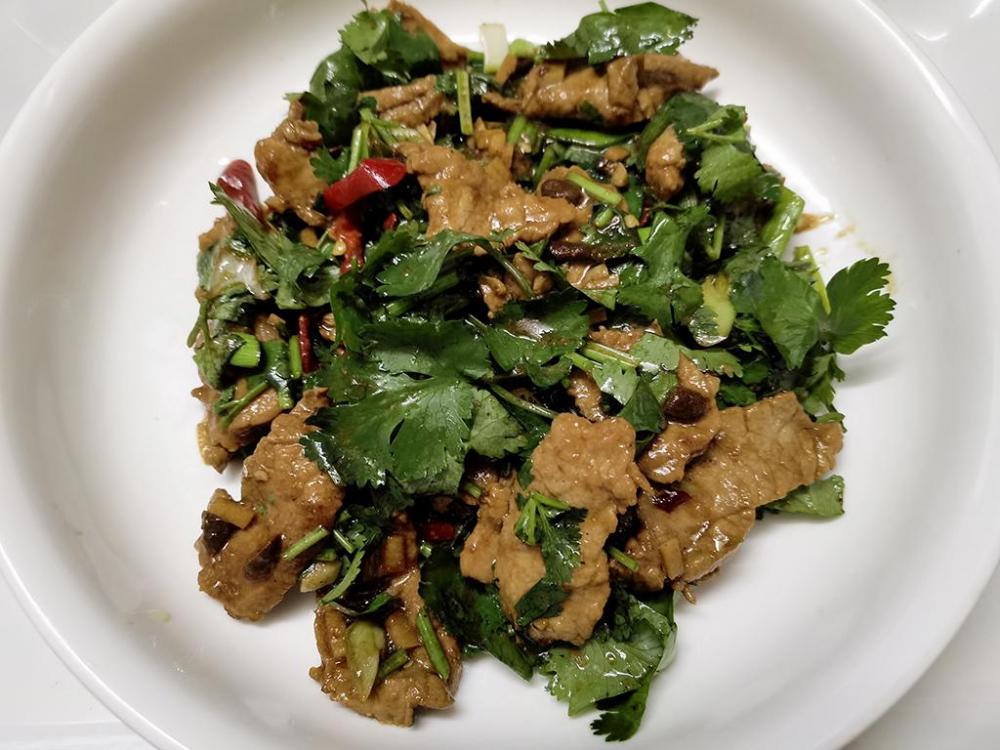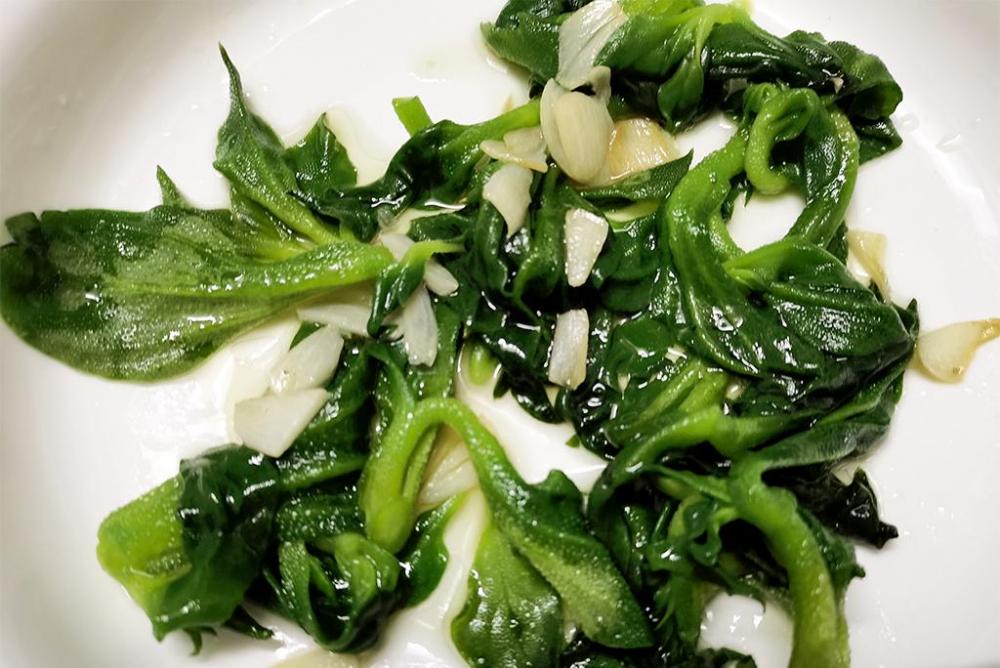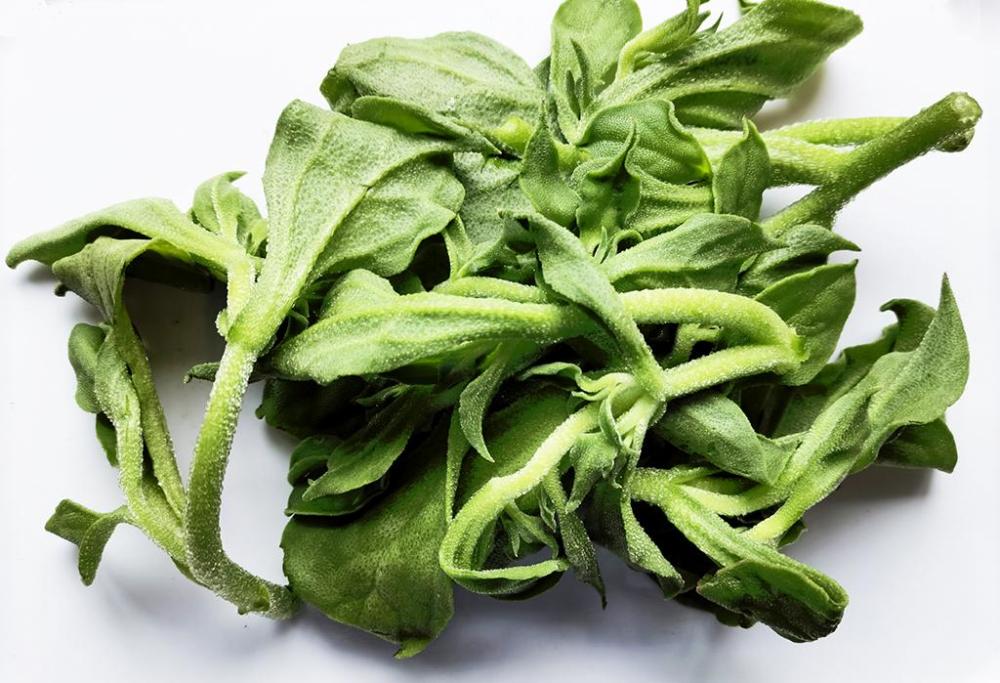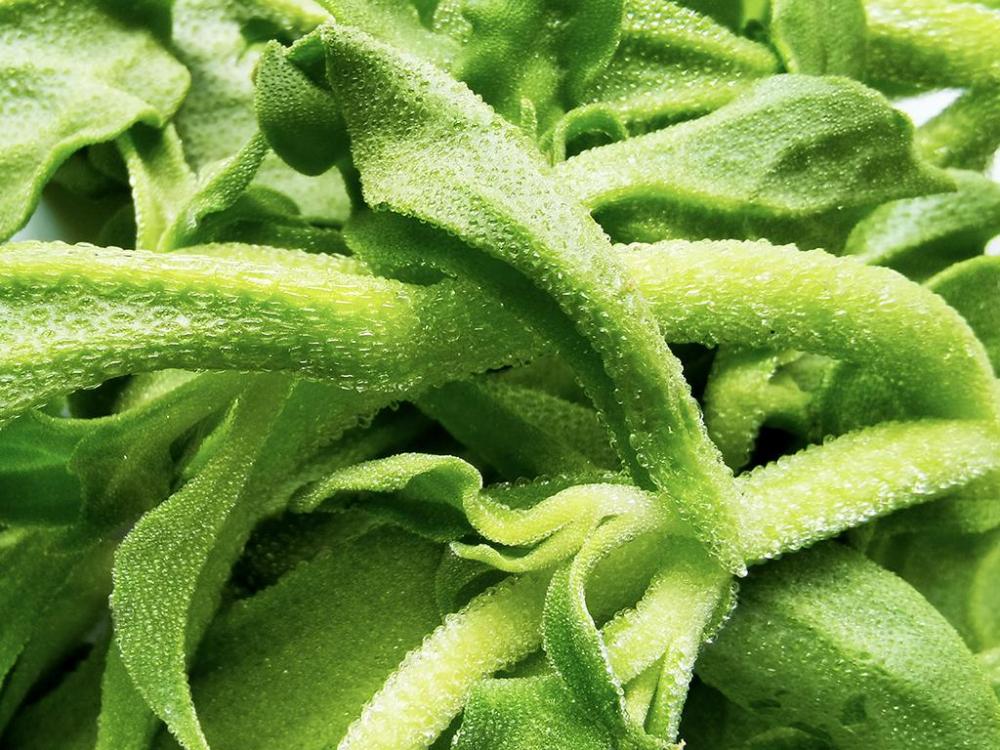-
Posts
16,552 -
Joined
-
Last visited
Content Type
Profiles
Forums
Store
Help Articles
Everything posted by liuzhou
-
No. I never dress it. Nor have I ever known it to stick, unless it has sat for a while and cooled right down after cooking it. I am careful to only cook it al dente.
-
Con fusion food tonight. An experiment. Mackerel steaks, pan fried in olive oil with fresh green Sichuan peppercorns. Thin spear asparagus, raw and dressed with litsea oil and seasalt. Orzo. The specific mackerel species is 马鲛鱼 (mǎ jiāo yú) - Japanese Spanish Mackerel - Scomberomorus niphonius. That's con fusion for you.
-
This is strange. Also it was very early and the light was terrible. Beans on toast with a square fried egg. As you can no doubt see, the yolk burst, but spread all to one side. Everything tasted fine, though! Especially with lots of black pepper.
-
They come in a plastic pouch in which the seagrapes are held in a heavy brine (seawater strength). I open this and transfer them and their water to an old Nescafé jar and keep it in the fridge. They keep well in the fridge for weeks. To use, I take out what I need, rinse them, then sit them in cold fresh water for about 10 - 15 minutes. This makes them swell a bit. Then serve.
-
These are very common here. From what I understand, they are used in herbal teas. They are to be found in most supermarkets, alongside the other ingredients uesd in such teas. That's not something I drink, so can't say more than that. Sorry.
-
That's what I'm hoping for, but I'm happy with the seeds, too.
-
I'll be using as many as I can as they are, fresh. A lot I will give away to friends and passing enthusiasts. That 500g only cost me the equivalent of €2. I've never found any way to preserve them successfully. Like you say, apart from dried, oil is the pretty much the nearest, but it loses potency very quickly. I've tried freezing them, too. They didn't like that.
-
I'm numb. I'm happily numb. I'd happily go to the dentist right now and let her do her worst without benefit of anesthetic. That numb. For the second time in the last few days, I have broken my own rule about only buying herbs and spices in very small quantities, but now, as of today, I am the proud possessor of 500 grams / 18 ounces of fresh green Sichuan peppercorns. 500g vacuum-packed fresh green Sichuan peppercorns It's the only way I could source them - from a restaurant supply place in SIchuan - wholesale only. In fact, I suspect they were just humouring me allowing me to buy that much. The house smells of the wonderful little things. Neighbours passing on the stairs outside are reeling. The wildlife has all fled. Warnings are being broadcast! Helicopters are flying overhead! I only bit into one tiny corn. Had to go lie down! 500 grams fresh green Sichuan peppercorns Close-up
-
39. 胡芦巴 (hú lú bā) – Fenugreek – Trigonella foenum-graecum I’m posting this as an example of one of the problems I am up against. The same story applies to many spices and herbs. Fenugreek, as I’m sure everyone here will be aware is most associated with Indian cuisine. India and China have had a fractured relationship for decades – this mainly manifests itself in the ongoing border disputes played out on top of bleak, barely accessible mountain tops in the Himalayas. It frequently breaks into actual shooting at each other. It also results in there being very little chance of me sourcing ingredients associated with India. I have, for example, never seen basmati rice in any store, supermarket or market. I can but it online but it comes from Pakistan. So, the choice of spices is also limited. Fenugreek, known as methi in India, is one of my favourites, either the leaves as a herb or the seeds as a spice. But it is unavailable here – or so I thought. I was in a local traditional pharmacy yesterday (looking for something non-eG related) and spotted something I thought I recognised. Yes, turmeric seeds! And they are grown in China’s Anhui Province. It turns out they are used in TCM to cure everything except gullibility! The only problem is that I can only buy them in loads of 500 grams. So, I broke my usual rule of only ever buying spices in small amounts and grabbed a bag (it was only $2.30 USD equivalent). I have planted a few to see if they germinate, but I’m not confident. Still, I’m happy with the seeds.
-
It is fairly clear that these studies involve much larger dosages than is ever likely to be ingested by throwing some turmeric into your curries or whatever.
-
That article does not prove anything. It merely demonstrates that curcumin may do something or has the potential to do something. It uses the word may 18 times and potential 28 times, then concudes by saying it is worth investigating. That's all. It is not peer reviewed evidence.
-
What price? Those cost me the equivalent of $1.50 USD per can. They are often sold as loss leaders in the UK and you can pick them up for next to nothing.
-
Cite one that actually comes from a peer reviewed academic source.
-
I knew someone was going to say that. These don't have that effect on me. I have had to give up lentils, though.
-
This almost had me in tears of nostalgia. My London home is a few minutes walk from here and I love the place. So glad to hear it seems to be being protected from developers, as I had heard it was under threat. Wonderful food, too. Mostly vegetarian, which I'm decidedly not, but will happily eat from time to time. London's most authentic Indian food?
-
- 2
-

-
-
-
38. 草鞋板 (cǎo xié bǎn) / 球兰 (qiú lán) - porcelainflower or wax plant - Hoya carnosa 球兰 (qiú lán) is a real outlier, even here. Hoya carnosa is native to East Asia and Australia and is a popular house plant around the world, noted for its fragrant flowers and waxy leaves. In the UK it has gained the Royal Horticultural Society’s Award of Garden Merit. Here it is more or less a weed, albeit it pretty one. It also has succulent shoots, 草鞋板 (cǎo xié bǎn), which are what we are interested in here. These are foraged then dried and used both medicinally and, in some places, cooking. I have only ever seen or eaten it once in a village just north of Liuzhou city. It was used in a chicken soup made in a bamboo pipe. That meal is documented in detail here. Although Google shows many sites discussing the plant, none seem to know it is used either medicinally or in cooking. One site did lead me to the information that it is not considered to be toxic to humans or pets. Oh good! Hoya flower image by JLPC, licensed under the Creative Commons Attribution-Share Alike 3.0 Unported license.
-
-
The only vine leaves I can get here are plastic! Used for decoration. it's strange because China does grow grapes and they usually use everything. I had a couple of vigorous vines in my London garden. Good grapes and leaves.
-
Pork with fermented black beans, garlic, chilli, Shaoxing wine, soy sauce, scallions and cilantro/coriander. "South African" ice plant, stir-fried with garlic. Rice.
-
Another new one (at least to here) turned up in the supermarket this morning. 南非冰草 (nán fēi bīng cǎo), literally 'South African Ice Grass', Mesembryanthemum crystallinum, is known in English as 'common ice plant', 'crystalline ice plant' or just plain 'ice plant'. Native to southern Africa and southern Europe, it is a succulent, now naturalised (sometimes invasively) in North and South America and Australia. It is a popular vegetable in Japan where it was first successfully cultivated on a commercial scale. Now it is grown in northern China, especially Shandong. The ice name comes from the bladder cells or water vesicles resembling ice on the leaves and stems. The leaves and stems (and seeds) are all edible. I'm guessing the locals here will just stir fry it. In its native South Africa, the leaves and stems are often pickled. As to taste, it is slightly sweet, with a fresh herbal taste; the texture is pleasantly crisp. The plant has the ability to absorb salt, so be careful with seasoning.



